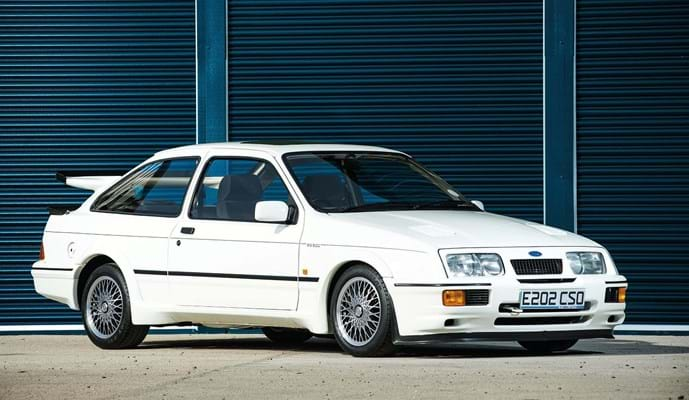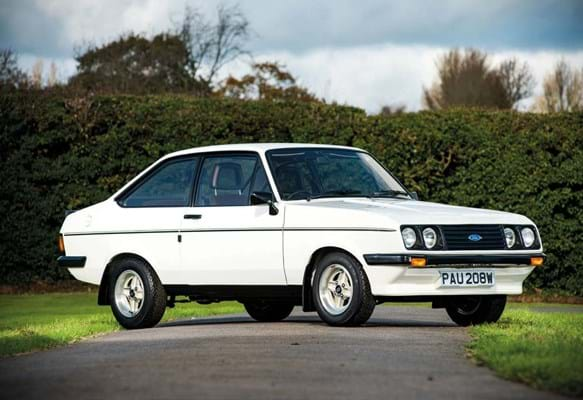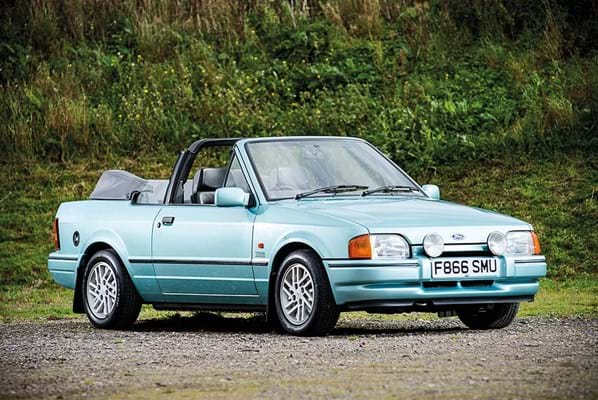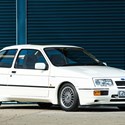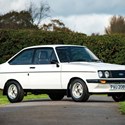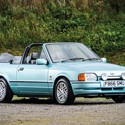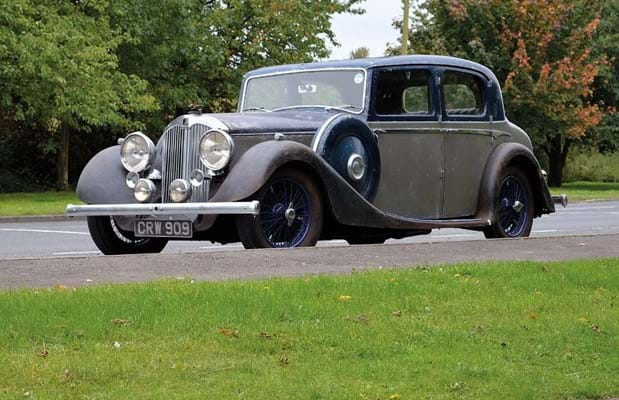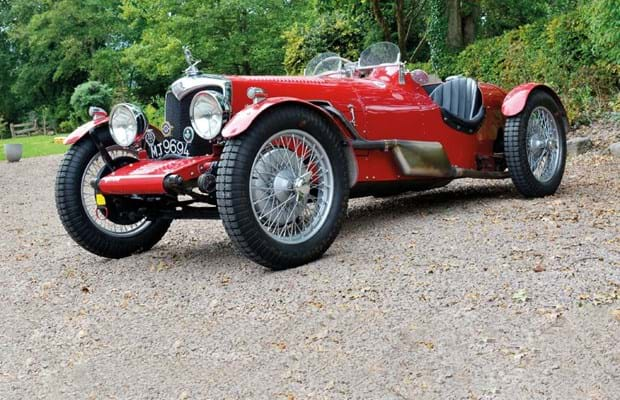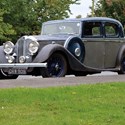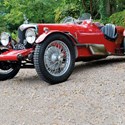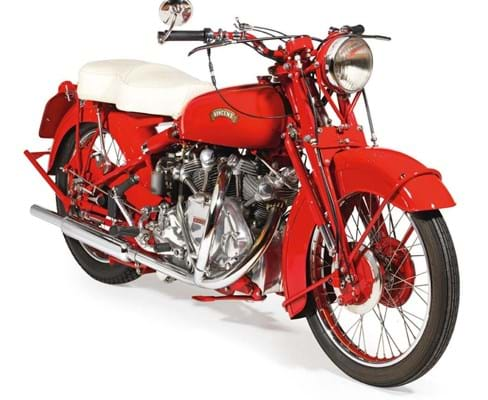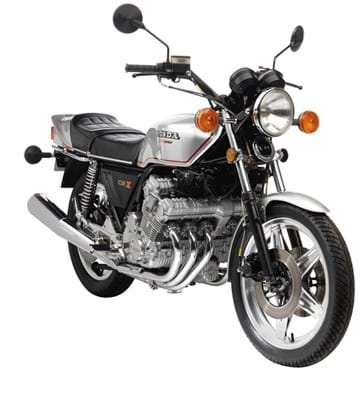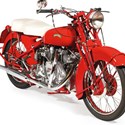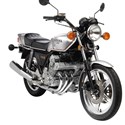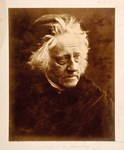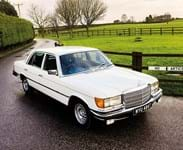The classic vehicle market can seem dauntingly complicated, but grasping the general trend is an excellent start.
Prices are still rising steadily in the engine room of the market, say between £5000 and £100,000, but 2017 actually saw a small drop in the average UK auction sale price, probably influenced by cooling values for six and seven-figure investment vehicles.
As certain sectors continue to accelerate, we will examine what sold well in 2017 – and what could do even better in 2018.
Optimistic outlook
One of the most obvious trends in recent years is the rise in popularity of younger classics from the 1980s, ’90s and 2000s. Christopher Holmes of South West Vehicle Auctions picks out the 1990s generation of Mercedes R129 SL as one to gain value and offers encouragement for the rest of the market too.
“There was some gloom this time last year,” he says, “but I’m an optimist and I don’t think much has changed – we sold 94% of our classic lots in 2017.”
Keith Murray of Morris Leslie Vehicle Auctions in Errol, Perthshire, also has confidence in an evolving scene.
“People tend to fancy the cars their parents had, or perhaps those they wish their parents had. So guys who were children when hot hatches and fast Fords were new are seeking them out now.”
Murray picks out Ford Escort RS Turbos and 2.8i Capris as strong sellers, with the Peugeot 205 GTi one of his tips for 2018. “We’d normally expect a nice Sierra RS Cosworth to make £40,000-50,000, but if two or three people want the same car it can go through the roof.”
Indeed it can. The Silverstone Auctions sale at the NEC Classic Motor Show in November 2017 laid down a few markers for the best low-mileage fast Fords, including £112,500 for a spotless 1988 Sierra Cosworth, £91,125 for an almost unused Escort Cosworth, a staggering £97,875 for a 1980 Escort RS2000 Mk 2 with 900 miles on the clock, £47,250 for a Capri Brooklands, £44,438 for an Escort RS Turbo and £27,000 for an Escort XR3i, making £16,000 and £22,000 for two 1980s Escort Cabriolets look almost cheap.
The way to go or a high point?
Are these extreme outlying results a signpost for things to come or a high peak on which the buyers will look back with regret? Perhaps what they show best is that unmarked, time-warp cars in utterly original condition set their own prices – see also the £20,700 paid at H&H in November for a Hillman Imp Californian with only 82 miles on the clock; more than twice what the very best Imp is usually worth.
Rob George of Anglia Car Auctions understands why: “Mint condition cars, almost regardless of make and model, will always be easy to sell. A great history with an owner who’s cherished an original car for many years… that’s now recognised as the one to buy. With restored cars, unless you witnessed the work, who knows what’s under the paint?”
George anticipates investors leaving the scene – he says it’s six months since someone asked him “what’s it going to be worth next year?” Instead, he sees a return to private enthusiasts who are happy to enjoy a car in the knowledge it’s rising in value at a modest rate but still out-performing money in the bank.
Obvious advantages
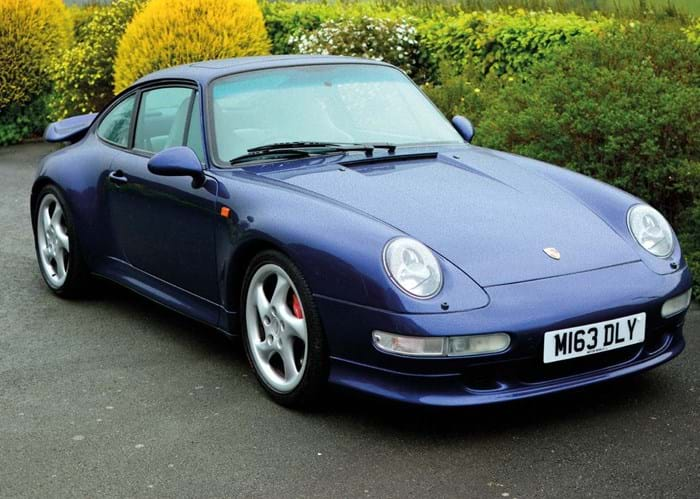
A second-hand Porsche? No, an appreciating modern classic. This 1995 993 Turbo sold for £83,500 (premium inclusive) with Brightwells last June.
James Dennison of Brightwells doesn’t like tipping cars as ‘no brainer’ investments, but thinks younger classics offer obvious advantages: “Most from this era are much more affordable than the classics of the 1960s and ’70s. They are also more usable and need less specialist maintenance.
“You could do worse than to seek out 1990s cars like the Toyota Supra Twin Turbo MkIV; Mazda RX-7; Porsche 928, 944 and 996 generation 911; BMW M Series cars; Volkswagen Corrado; Jaguar XKR; Alfa Romeo GTV and GTA models; Fiat Coupe Turbo; Audi S and RS,” he says.
At its August 2017 sale Brightwells sold two BMW 325i saloons from 1989 and 1991 for £7200 and £9000 respectively… very nice examples, but three times what you would have paid a few years ago. In the same sale, a Volvo 850 T5R gave someone a Nineties performance icon for just £6000.
Yet Dennison doesn’t see this rise in interest in younger classics damaging values of the real oldtimers from the 1920s and ’30s.
“The pre-war market is less volatile than the classic 1960s era with more modest but steady growth, although the really ‘blue chip’ marques have shot up – take the 1936 Riley 12/4 Sports Special we sold on November 29 for £71,500 against an estimate of £45,000-£50,000.”
Scruffy but star sale
Brightwells also managed an eyecatching £82,500 for a scruffy but rare 1938 Autovia saloon. “At our last Bicester sale in October 2017 we sold 87% of the pre-war cars, compared to about 70% of the postwar cars,” says Dennison.
Don’t worry about the post-war favourites just yet. While some previous stars in the top end of the market (£250,000-plus) have fallen back, consistent performers such as the Jaguar E-type, Mini Cooper, Austin-Healey and less exotic versions of the Porsche 911 and 356 show no signs of failing.
‘Barn find’ is a term that now gets used for anything with an expired MoT and a layer of garage dust, but in its true sense – a long-stored, highly original car that hasn’t been to market in a generation – it provides a powerful effect even when logic dictates a more down-to-earth price.
CCA sold a horrifically decomposed 1962 E-Type coupé for £39,000 in April, and at the same sale hammered down a long-stored and very rusty 1960 Mercedes 190SL for £73,700 – close to the value of a smart, road-ready example.
The point in all cases is that professional restorations are very expensive – £100,000-plus would not be abnormal for an E-Type or a 190SL – meaning buyers are either passionate about reviving sad specimens regardless of cost or else have confidence in a continuing boom.
Two-wheel wonders
The same applies with motorcycles: Bonhams sold a barn-fresh 1964 Velocette Viper at its Stafford sale in October for £4600, when a showwinning example might be only £2000 more.
Mark Bryan of H&H fully appreciates the illogical appeal that rusty, seized engines and flakey paint can have: “I consigned a Triumph T100 Tiger last year and valued it at maybe £1500-2000, but it shot up to £3500. Even one-owner Honda Cub mopeds with seized engines can fetch well over £1000. There’s a romance about bringing back something from the past that buyers really do value.”
The two-wheeled equivalents to ‘youngtimer’ classic cars are certainly worth considering too, as Bryan points out: “The Vintage Motorcycle Club’s cut-off is 25 years old, so that now includes the first Honda Fireblades. Lots of 1980s and 1990s bikes are becoming collectable.”
Examples include the largest and sportiest machines (Honda RC30, Suzuki RG500, Honda CBX1000, Kawasaki Z1000 and Z1300) which have already gained a cult following, making other more affordable sports bikes of the era look like a wise buy right now. Conversely, the run-ofthe- mill British bikes from the 1950s and ’60s aren’t doing so well.
John Harding of Brightwells suggests why: “The oldest generation of enthusiasts are finding they can’t manage heavy old British bikes these days, so they get a little lightweight example like a BSA Bantam or a Japanese bike from the 1970s with an electric starter.”
Harding’s analysis is that the famous names – Vincent, Norton, Triumph and BSA – will buck this trend, as will military versions of just about anything.
“Bikes from the 1930s with girder forks are good news at the moment,” he says, “but earlier 1920s bikes with flat tanks and two-stroke engines are falling back because they’re barely usable in modern traffic.”
Automobilia attractions
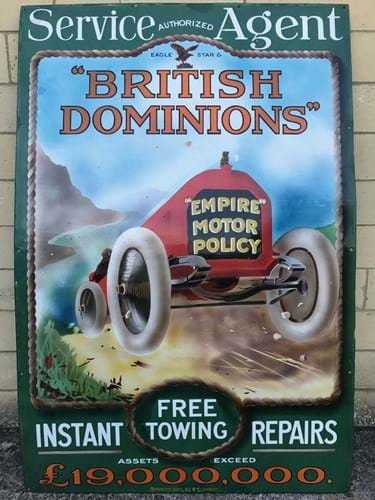
Original posters and enamel signs can deliver hefty prices in the automobilia market. This British Dominions sign sold on low estimate at £6500 in the specialist sale at Richard Edmonds Auctions in October. The next Petroliana and Automobilia auction at this Chippenham saleroom is on April 13.
Connected with both motorcyles and cars is the field of automobilia. Toby Wilson of Bonhams says his lots touch virtually every other department in the company, from paintings to fashion, military medals to toys, sculpture to books.
“Automobilia is a microcosm of the classic car market – when the cars do well, so does automobilia, and vice versa,” he says.
While some connections are obvious (for example, Bentley spares and handbooks go up as vintage Bentleys go up), others are much less so. Wilson gives the example of decanters from the 1960s shaped like classic car radiators.
“They were about £35 through the 1980s and ’90s, then rose to £100 in the Noughties, then climbed to £1000 a few years ago and on to £2000, but they’ve now dropped back to between £600 and £800. It can be very hard to work out what forces prices.”
As to 2018, Wilson says that motoring posters are much soughtafter, especially those depicting races from pre-First World War days. Edwardian photo albums of cars also sell extremely well.
From charming enamel lapel badges for a few pounds (a favourite of Wilson’s) to a full set of Ferrari yearbooks at £37,500 at the Goodwood sale in September, automobilia sales offer bottomless fascination for collectors, often blissfully free from thoughts of investment.
Nigel Boothman writes for Practical Classics as well as other classic car titles.

